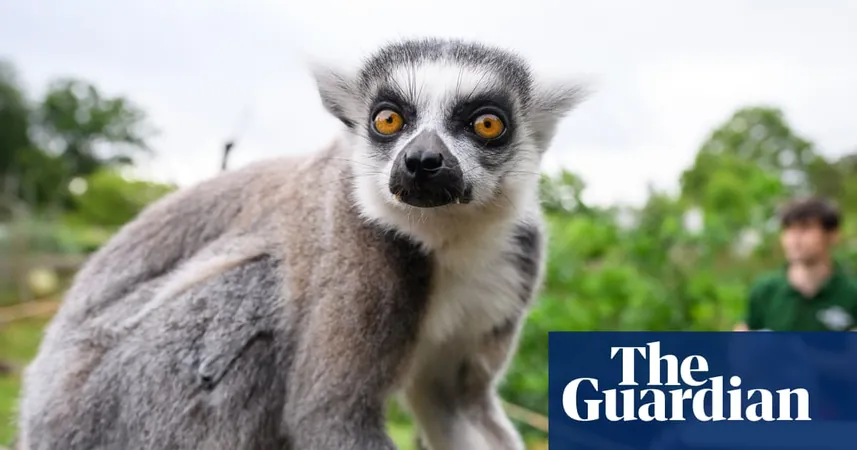
Unlocking Evolution: Do Longer Thumbs Signal Bigger Brains in Primates?
2025-08-27
Author: Jia
The Curious Connection Between Thumbs and Brain Size
Imagine this: longer thumbs could be a sign of a bigger brain! New research is shaking up our understanding of primate evolution by suggesting that manual dexterity—particularly thumb length—is intricately linked to brain size.
The Evolutionary Mystery
Dr. Joanna Baker, the lead researcher from the University of Reading, proposes that primates became more adept at planning and manipulating their environment as their intelligence evolved. With enhanced manual skills, those with longer thumbs likely enjoyed greater success in thriving and surviving.
Why Thumbs Matter in Human Evolution
Large brains and skilled hands have been pivotal in human evolution, especially with opposable thumbs allowing our ancestors to grip and create tools. Yet, with various primates possessing partly opposable thumbs, researchers have long pondered whether thumb length could also play a crucial role in the ability to use tools.
A Groundbreaking Study
To dive deeper, Baker and her team analyzed the estimated brain sizes and thumb lengths across 94 primate species—notably from ancient hominins to lemurs. Their findings, shared in the journal *Communications Biology*, uncovered that humans and most other hominins possess significantly longer thumbs than expected for their hand proportions.
The Thumb-Brain Connection Revealed
The striking pattern emerged: a longer thumb often coincides with a larger brain. Interestingly, when controlling for brain size, humans appear more aligned with primate trends rather than being outliers.
“It’s clear,” Baker states, “longer thumbs typically correlate with larger brains across various species.” Except for one curious case: the early hominin *Au. sediba*, which had an unexpectedly long thumb, potentially due to its arboreal and terrestrial lifestyle.
The Neocortex Advantage
The research highlights that the neocortex—a brain region critical for cognition and action planning—was larger in primates with longer thumbs. Surprising to Baker, it wasn't the parts of the brain tied to motor control that showed this growth.
Limitations of Thumb Length as a Tool Indicator
However, the study cautions against viewing thumb length as a definitive marker for tool use. The relationship between thumb length and brain size persists across all primates, tool users or not, leaving room for further inquiry.
Looking Toward the Future of Research
Dr. Fotios Alexandros Karakostis of the University of Tübingen, not involved in the study, affirms that while hand and brain adaptations have likely co-evolved, understanding human-like manual dexterity requires a more comprehensive look at additional anatomical traits and neural mechanisms connected to tool use.
As we delve deeper into the primate lineage, the complexities of thumb length and brain size could reveal more about what makes humans uniquely human.



 Brasil (PT)
Brasil (PT)
 Canada (EN)
Canada (EN)
 Chile (ES)
Chile (ES)
 Česko (CS)
Česko (CS)
 대한민국 (KO)
대한민국 (KO)
 España (ES)
España (ES)
 France (FR)
France (FR)
 Hong Kong (EN)
Hong Kong (EN)
 Italia (IT)
Italia (IT)
 日本 (JA)
日本 (JA)
 Magyarország (HU)
Magyarország (HU)
 Norge (NO)
Norge (NO)
 Polska (PL)
Polska (PL)
 Schweiz (DE)
Schweiz (DE)
 Singapore (EN)
Singapore (EN)
 Sverige (SV)
Sverige (SV)
 Suomi (FI)
Suomi (FI)
 Türkiye (TR)
Türkiye (TR)
 الإمارات العربية المتحدة (AR)
الإمارات العربية المتحدة (AR)